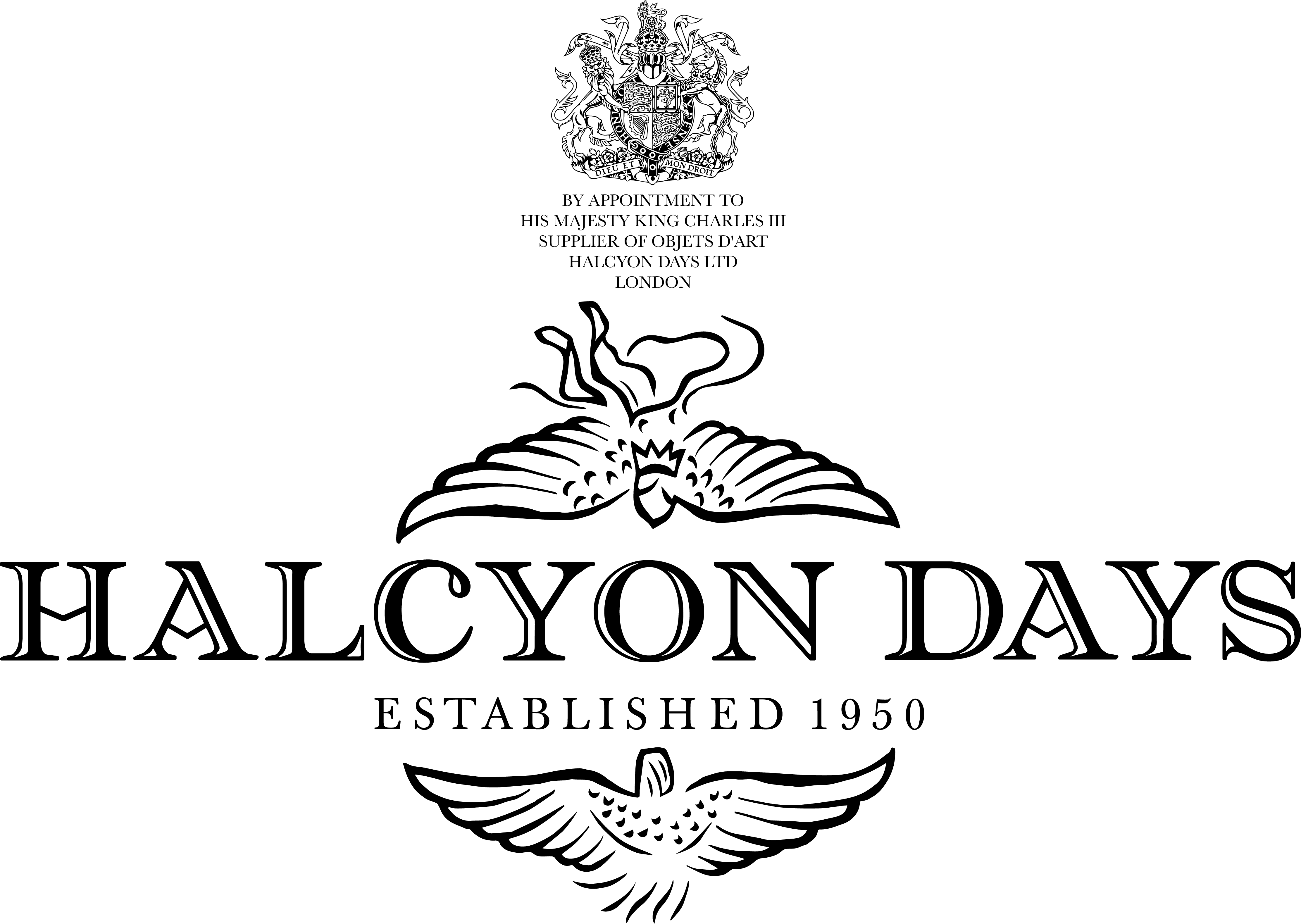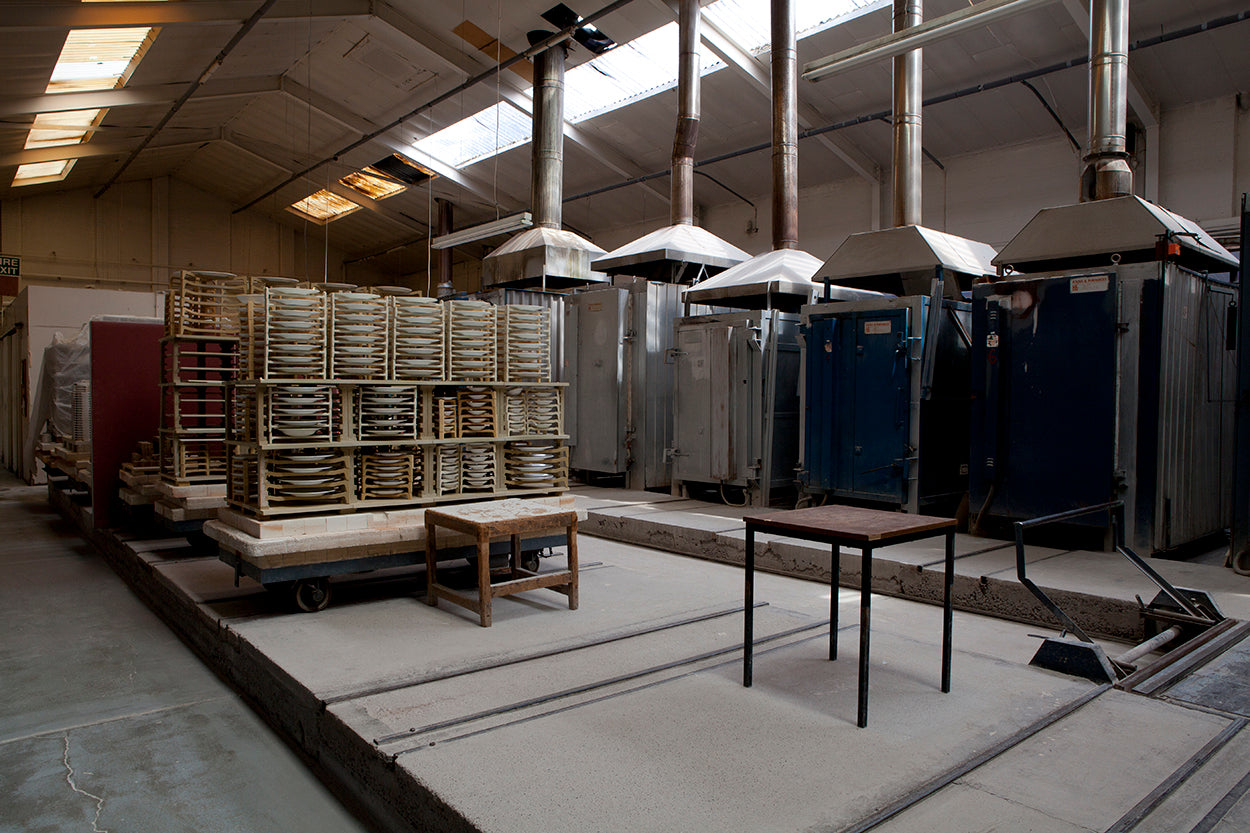From two locations in the West Midlands, our artisans forge not only our products but our identity as a brand. Each piece they create is a result of hours, days, or weeks of work, as well as an embodiment of centuries of craft history. In most instances, the practices in place in our two factories match those first used hundreds of years ago and, in the case of enamelling, those practices span back as far as 1740. Even some of the machines we use date from the 1950s, but that’s not to say we’re old fashioned. Our production processes celebrate the best of the past and, working in tandem with our team of designers, our artisans bring the best of the past into the present.
Recently, a contingent from our London office headed up to visit our factories. Even to our knowing eye, seeing the deft skill of our artisans in both locations left us awe-struck. The time, talent, knowhow and knowledge that are lovingly poured into every single piece produced are nothing short of exceptional and, hopefully, this piece serves to communicate at least some of the experience of witnessing all those remarkable things firsthand.
Enamel box bases ready for inspection
Our enamels factory can be found in Wolverhampton, and the processes happening behind its modest facade are equal parts magical and meticulous. Each of the artisans based here have a defined, essential role in bringing our enamels to life. All of these pieces begin as a fine sheet of copper which, once shaped, is washed in solutions containing soap and acid. This stage is known as ‘pickling’ and leaves the copper prepared to take on its first layer of enamel.
The copper is then carefully dipped in or sprayed with liquid enamel; a mixture precisely blended from fine particles of glass, clay, paint and water. Once it has a full coating, it is fired in the kiln for the first time at 800°C. This process is repeated at least 5 more times to ensure a glossy, flawless finish. In the intense heat of the kiln, unavoidable debris can damage the enamel, meaning the whole process must begin again. For a box to progress through these initial stages, a delicate balance of skill and timing is required.
Copper box bases being carefully sprayed with enamel
As the process continues, those skill levels remain. A lithographic transfer is next applied to the enamel. This provides a guide for our painters when they decorate the bangle or box. It is essential that the lithograph is perfectly aligned with the shape of the piece. The two craftswomen responsible for this tricky stage do it with such delicacy and mastery that they give it a convincingly deceptive air of ease.
The enamel is then fired to fuse with the lithograph before making its way into the paint studio. Entering the room, the clamorous activity of the factory floor is replaced by an air of tranquil concentration and the soft sounds of muted music from a crackly radio. Here, three exceptionally talented artisans sit side by side, and they hand-paint each piece’s design details using enamel paints. Our most intricately designed pieces can take days to fully complete while, at the very least, this stage of the process takes several hours. The enamels then return to the bustle of next door to be fired one final time.
One of our artisans at work
To finish the process, enamel boxes are precisely fitted with a gold or platinum mount and, if they are musicals, a mesmerising looking movement. Some of the enamel edges may also need levelling through a process known as linishing. A thorough quality check is conducted before enamels are packaged and ready to be delivered.
'The Ceiling of the Chapel Royal' musical enamel box
An hour North, past verdant rolling hills, lies the factory where all of our fine bone china products are made. Stoke-on-Trent is the traditional hub of the pottery industry and, at our factory there, 40 master craftsmen and women work to create a diverse range of pieces from elaborately painted egg cups to gold-gilded pen pots.
Following our acquisition of the Caverswall English China Company in 2015, our fine bone china output has become an integral facet of our business. In Stoke-on-Trent, all of it is made entirely by hand following an age-old process.
Each product starts life as liquid clay, known as slip. The slip mixture no longer contains real bone ash, but its secret recipe contains a calcium substitute which will give the final product its trademark translucency and strength. The slip then gets poured into moulds depending on the desired shape of the piece. Next, the clay is fired at 1230 degrees creating the ware commonly called ‘biscuit’ due to its dry, textured surface.
Plates waiting to be glazed by hand
Next, the pieces are glazed by hand before a second firing in a large kiln. Following this, the finished and glossy ware is ready for lithographing. As with our enamels, an outline of the product’s design is masterfully applied before a further firing fuses it with the fine bone china. Our plates, saucers, teacups, bowls and beyond are all carefully hand-painted.
Two dedicated artisans will then hand-gild product edges with liquid 18ct gold or platinum depending on design. Using the finest of brushes, they place pieces on a revolving table while steadying their painting hand on a work surface. Again, a false image of ease is created by their expertise. An image, in fact, that was shattered entirely when the author of this piece fatefully tried their hand at the decidedly difficult art.
Our 'Let's Play Cards' pieces feature 24ct gold-gilded edging
The handmade, hand-painted nature of our entire offering means that no two teapots, trinket trays or treat jars are exactly the same. The items that are so adeptly created in both of our factories are, like the people who create them, unique. A number of our artisans in Stoke-on-Trent and Wolverhampton have been with us for over 30 years and often learned their trade from relatives who worked at Halcyon Days in the past. This longevity is essential to, and defining of, our company. It ensures that our standards remain reliably high no matter how far our pieces travel from those two factories in the heart of England.








2 comments
Hi Gerald – thank you for your comment. We do not currently offer that unfortunately. However, we are working on a way to make this a possibility in future. Watch this space!
I had heard, somewhere, that members of the public are allowed to visit the HD factory/s.
Is that true – and if so, how can that be arranged ?
Thanks: Gerald Moore
Leave a comment